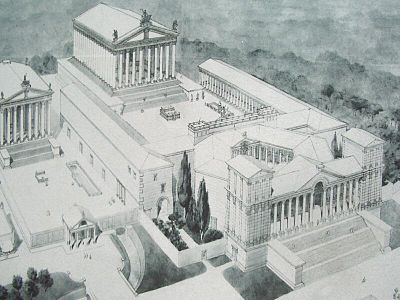
Back فينيقيا تحت الحكم الروماني Arabic Fenicia bajo dominio romano Spanish فنیقیه در دوره امپراتوری روم Persian د روم تر واکمنۍ لاندې فنیقیه Pashto/Pushto

Phoenicia under Roman rule describes the Phoenician city states (in the area of modern Lebanon, coastal Syria, the northern part of Galilee, Acre and the Northern Coastal Plain) ruled by Rome from 64 BCE to the Muslim conquests of the 7th century. The area around Berytus (and to a lesser degree around Heliopolis) was the only Latin speaking and Romanized part of Aramaic-speaking Phoenicia.
The history of the Roman Republic began between the 6th century BCE/5th century BCE. The Roman Phoenicia lasted from the 1st century to the 4th century BCE. In the 4th century BCE the Romans expanded their empire into the Italian peninsula and proceeded to expand into foreign areas. The Roman Republic invaded Carthage, where the Punic Wars were fought.
This was one of the most prosperous periods in the history of the area that is now Lebanon. Phoenicia became one of the intellectual and economic hubs of the eastern half of the empire and a destination for merchants and intellectuals. The Romans built the temples of Baalbek, the temples at Mount Hermon, the temples of Niha and various other structures now in ruins that include smaller temples, hippodromes, baths and the Law school of Berytus.